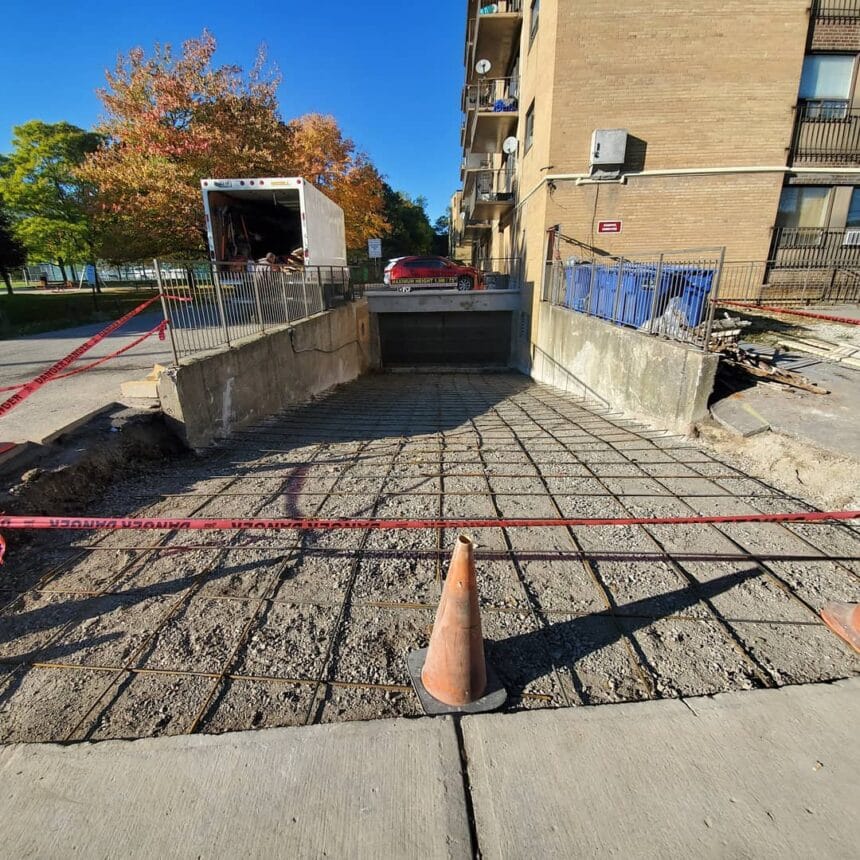Retaining wall designs, retaining wall blocks, location and installation—there’s a lot to consider when thinking about installing retaining walls in Toronto. For those currently considering this functional design, here’s an easy guide on what you’ll have to take into consideration before installing a retaining wall.
GETTING STARTED: RETAINING WALL INSTALLATION BASICS
Have you ever thought about installing retaining walls in Toronto or adding retaining wall blocks to your garden? Not only is a retaining wall the perfect way to create eye-pleasing garden “curb appeal,” but it can also control any erosion or water drainage issues your yard may be experiencing.
Just to clarify, a retaining wall is a type of structure that is free-standing on one side but supports soil on the other. They are commonly employed to create level spaces on otherwise uneven or sloped yards and gardens.
There is a fair bit of customization available in the retaining wall’s blocks as well! You can go for naturally styled materials, to make the wall blend into the landscape with a smooth, finished appearance, or you can take a more stylistic concrete or slab approach to create a unique look.
DIFFERENT TYPES OF RETAINING WALLS
What are the varying factors between the different types of retaining walls? Which one should you install? The exact design of your retaining wall will depend on a number of factors, including soil pressure, how big your space is, and how much you’d like to customize it.
GRAVITY RETAINING WALL
A gravity retaining wall relies on sheer mass to resist the soil’s pressure. These are made of dense, heavy material, like concrete or stone slabs, and have a gentle sloped appearance to offer better resistance. Dry-stacked (mortarless) gravity walls can offer a certain degree of flexibility that make them useful in colder, frost-prone areas. Gravity walls are suited for shorter heights compared to other retaining wall types.
CANTILEVERED RETAINING WALL
The most striking difference between a cantilevered and gravity retaining wall is that a cantilevered wall employs a series of internal concrete or steel beams and ground supports to carry the load. This makes them suited for holding higher weights, like that of a pool. As an added bonus, cantilevered retaining walls can not only be made of the same materials as a gravity wall, but they require less of the materials to do the same job since they rely on the beam supports rather than mass.
PILING RETAINING WALLS
Instead of using blocks, this piled retaining wall design employs a sheet of planks that is driven into the soil to create a form of cordon. Piling walls have a more ribbed appearance than other types, but are often the only choice for small spaces, or areas with soft soil. While a piling wall can be made from metal, wood, or vinyl, the appearance cannot be customized as much as the blocks used in other types of retaining walls.
ANCHORED RETAINING WALL
When a retaining wall is expected to have to withstand extremely high loads, or is too thin or weak for its own load, an anchor can be employed. An anchored wall, usually made of concrete, is any type of retaining wall where steel cables are used to secure the anchor in the soil, to provide additional stability and resistance. This is a complex design that will increase the cost of the retaining wall—but may be necessary if the wall needs to withstand an extremely high load.
CONSULT AN EXPERT
Contact Concrete One Ltd. if you are considering installing a retaining wall for your property in Toronto. We have been providing skilled workmanship and landscaping to the Greater Toronto Area for over 30 years. Contact us today for a consultation or to request a quote for all of your landscaping needs.




